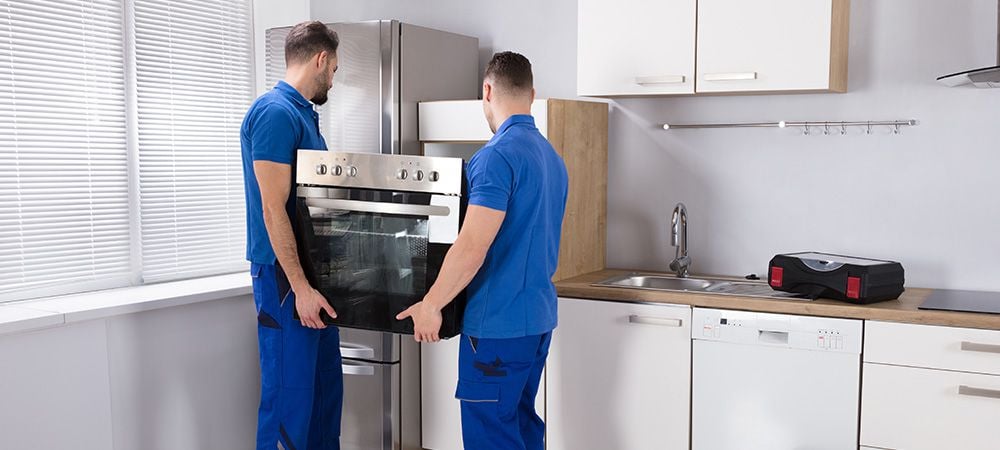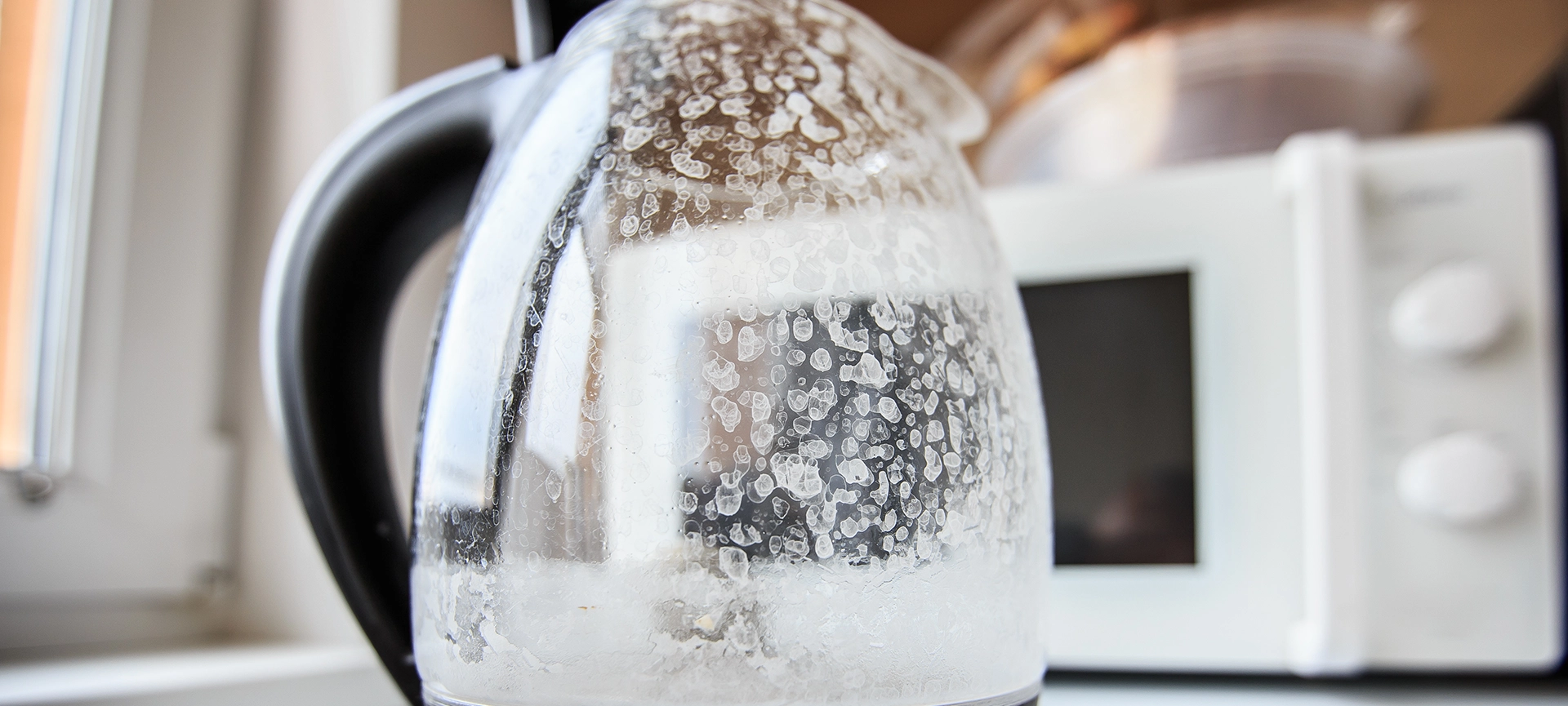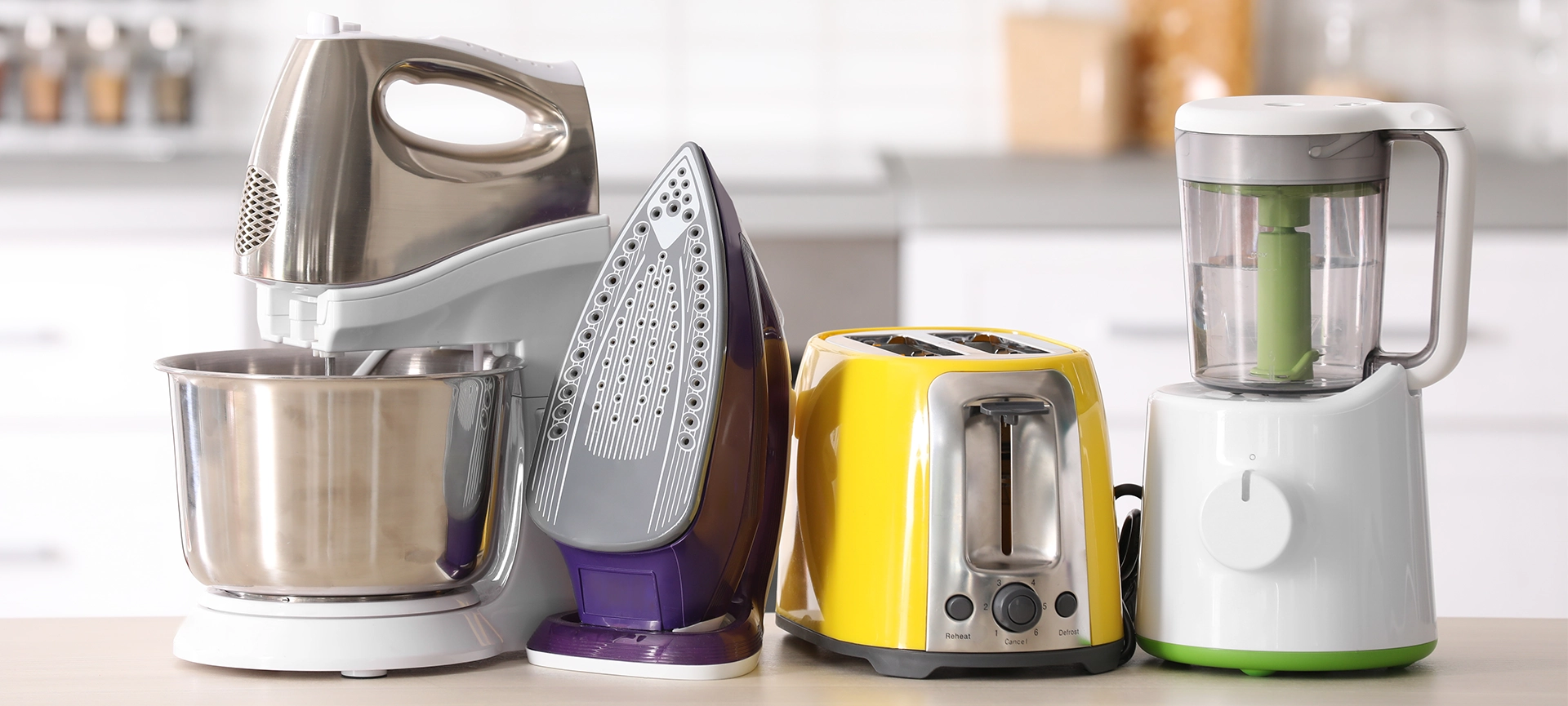When it comes to home appliances, we all have that one fear — your trusty appliance breaking down when you need it the most. Imagine your washer breaking down mid-cycle, before a huge week at work.
Or your refrigerator not getting cold soon after you buy fresh groceries. Another unwanted situation is your oven not coming on the day before a huge holiday meal.
Nobody wants to experience these situations. And while they’re impossible to predict, you can avoid sudden faults by following specific tips for home appliance maintenance.
We’re not discussing comprehensive appliance maintenance steps that involve a professional technician and a huge bill. Instead, we’ll cover simple maintenance tasks that’ll keep your home appliances in great working condition for a long time.
How to Maintain the Home Appliances You Own
The first tip for home appliance maintenance is following safety precautions before touching the device. This includes wearing safety gloves and glasses. We also recommend turning off every device before you start working on them.
Our guide to home appliance maintenance will break down the process for different devices. Here’s the best way to maintain different types of home appliances.
Refrigerator
Below are effective tips to maintain your fridge:
- This tip is for refrigerator units with an ice-maker or water filter. Change the water filter at least once every six months. The owner’s manuals should contain information that helps you find your model’s filter.
- Vacuum the freezer and refrigerator coils once every year. The coils are usually behind your fridge’s vent cover.
- Put extra effort into keeping your fridge clean. Ice and grime buildup can limit your unit’s efficiency.
Dishwasher
The major home appliance maintenance tip for your microwave involves keeping the device clean. We recommend washing your dishwasher periodically — every six months should do it.
We advise using a recommended cleaning solution to wash your dishwasher. The racks inside the average dishwasher have vertical spikes that require periodic replacement. Assess them and buy replacement spikes where necessary. Doing so will prevent the spikes from staining your dishes.
Range, Stove and Oven
Maintaining your oven is simpler when it’s a new model with self-cleaning features. We recommend using the self-cleaning mode every six months.
There should be a 6-hour waiting period after using the self-cleaning mode. After this time lapse, unplug the device and wipe the insides with a water and white vinegar solution.
There’s an additional home appliance maintenance tip for stoves with coil burners. It’s important to periodically check for red spots on your stove’s coil burners. These red spots mean the coils will likely short out after a few uses. If you see a red spot, replace the burner quickly.
Vent Hood
Cleaning is one of the most important tips for home appliance maintenance. It applies to every home appliance, including the vent hood.
We recommend cleaning the grease filters and vents periodically. Every few weeks should be sufficient depending on the frequency of usage.
Another area of concern is the vent hood’s fan blades. Periodic cleaning is important to prevent grease and dirt from caking and slowing down the efficiency of these fan blades.
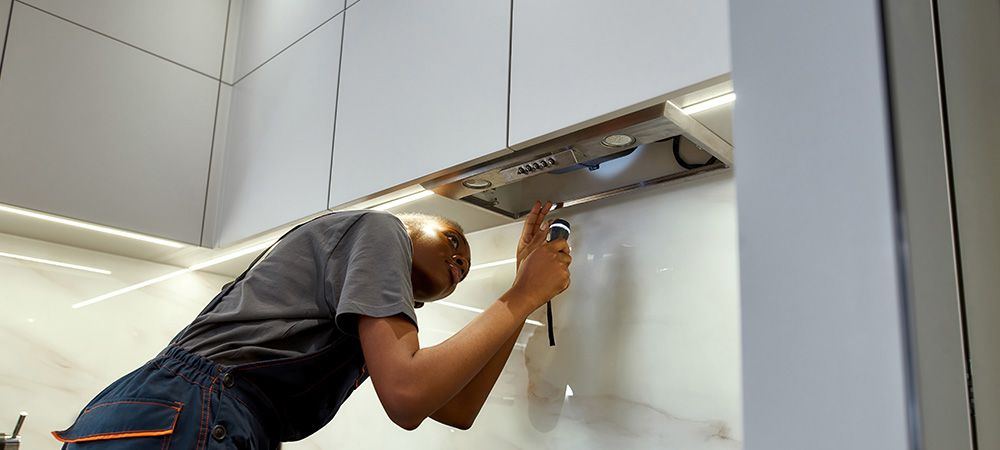
Microwave
Start by paying attention to the microwave and how you use it. Always unplug the device whenever it’s not in use.
Similarly, avoid running the microwave without food in it. Doing so can damage the home appliance and even constitute a fire hazard.
Washing Machine
Making sure your device is level every time it’s in use is an important washer maintenance tip. Another precautionary move is cleaning the washer’s lint trap regularly. Regular cleaning will prevent dirt and lint buildup, enhancing your device’s efficiency.
Another preventive step is scheduling professional cleaning services for your dryer every 3-6 months. And if you notice any strange noises coming from the device, contact professional appliance repair services immediately!
Related Article: How to Stop Bugs Getting in Through Dryer Vents
General Home Appliance Maintenance Tips
Above, we’ve covered effective maintenance tips for each home appliance. Here, we’ll cover general tips for different home appliances.
Keep reading to see what we mean.
Clean Refrigerator Coils
Dirty coils are the culprit half the time we get refrigerator repair calls. If your fridge suddenly stops working on a hot day, start by checking the coil.
Usually, you can access the coils by removing your fridge’s front grill. This step will explode the coils, allowing you to clean them with a designated cleaning brush.
You’ll need to run the cleaning brush over the coils multiple times before they become clean. And for refrigerators with coils at the back, you’ll need to reposition the fridge to clean them.
Coil cleaning is top of our list of tips for home appliance maintenance due to its undeniable impact. Clean coils will allow the refrigerator to cook your groceries more effectively. Plus, effective cooling equals long-term savings on your energy bill.
Recalibrate the Oven Temperature Readings
Sometimes, your oven won’t get as hot as it should. This situation is an indication you need to recalibrate the oven’s temperature settings. And the best way to do this is by following the instructions in your device’s manual. If you can’t find the manual, you may have no choice but to find a downloadable format online.
Typically, you’ll need a thermometer in good working condition to recalibrate your oven. Place the thermometer in the oven’s centre shelf until the device reaches a constant temperature. Then, follow the steps in your user’s manual to match your oven’s temperature readings to the thermometer’s output.
Keeping the Dishwasher Clean
8 out of ten times, the answer to how to maintain a home appliance is to keep the device clean. The same goes for a dishwasher that’s no longer washing plates effectively. The guilty culprit here is usually a dirty food-filter.
A clogged filter won’t allow water to reach the device’s spray arms. Therefore, your dishwasher won’t clean plates on the top rack effectively.
Thankfully, this is a home appliance maintenance activity you can perform in two minutes. Start by pulling out the lower rack and removing the filter cover within the dishwasher. Then, clean the screen with a dry or wet vacuum.
We also recommend checking the float switch near the filter. Slide it up and down making sure it doesn’t stick. Jiggle the switch up and down, making sure to clean it with water.
Keep Your Device Quiet
The majority of home appliances vibrate while they work. Dryers and washers move around a lot transferring vibrations to the floor of your home.
That’s why a key home appliance maintenance tip is using an anti-vibration pad on the feet of your devices. These pads comprise flexible rubber material and will prevent your device from moving around while it works.
Avoid Slamming the Doors
As much as possible, avoid slamming your washer or dryer’s doors. While they might look solid, most dryer and washer doors are pretty flimsy. Therefore, if you make a habit of slamming the doors, they’re going to break eventually.
That’s a home appliance repair problem that can cost you up to $100 to fix. It’s an expense you can avoid by gently lowering the lid (or closing the door) every time you use the home appliance.
Clean Dirty Range Hoods
It’s impossible to discuss home appliance maintenance tips without covering cleaning methods for your range hood.
Clean dirty range hoods periodically, ensuring you pay attention to the downdraft vent filters. Similarly, it’s important to wash metal grease filters in warm, soapy water. You can wash the filters by hand or put them in a dishwasher.
Washing is out of the question for range hoods that use charcoal and paper filters. Here, the better precautionary move is replacing the filter entirely.
Ensure Great Contact for Electric Stove Burners
It’s possible to notice a burner working awkwardly while cooking dinner. The first maintenance step to follow here is turning off the affected burner. Then, pull the burner out of its socket before plugging it again, wiggling until you get a better contact.
If the burner’s contact still feels loose, then remove it and bend the burner prongs to achieve a together connection. A firm connection will improve the burners ability to heat your food.
Keep Fridge Gaskets Clean
The gasket in your refrigerator is responsible for sealing the device properly. This sealing mechanism allows your refrigerator to maintain its inner temperatures.
But sticky materials like jam and syrup can build up on your refrigerator. These materials will stick the door frame to the gasket, making it near impossible to open the door. Plus, pulling on a stuck refrigerator door can tear the gasket — an appliance repair fault that costs up to $100 to fix.
A fridge with a faulty gasket will run longer to keep your groceries cold, thereby increasing your energy bills. We recommend cleaning your gasket with a sponge and warm water. Avoid detergents as they can spoil the gasket.
Verify the Oven Door Seal
Poor sealing can contribute to your oven losing up to 20% of the heat it produces. Poor sealing also leads to uneven cooking. Eventually, it’ll start to take longer to cook your food.
You can avoid the pitfalls above by assessing the seal periodically. Open the oven door and search for the rubber gasket around its perimeter. The gasket may comprise fibreglass material in some models.
Feel around its perimeter for any breaks, tears or deformities in the gasket. You can also check for leaks while the oven door is closed.
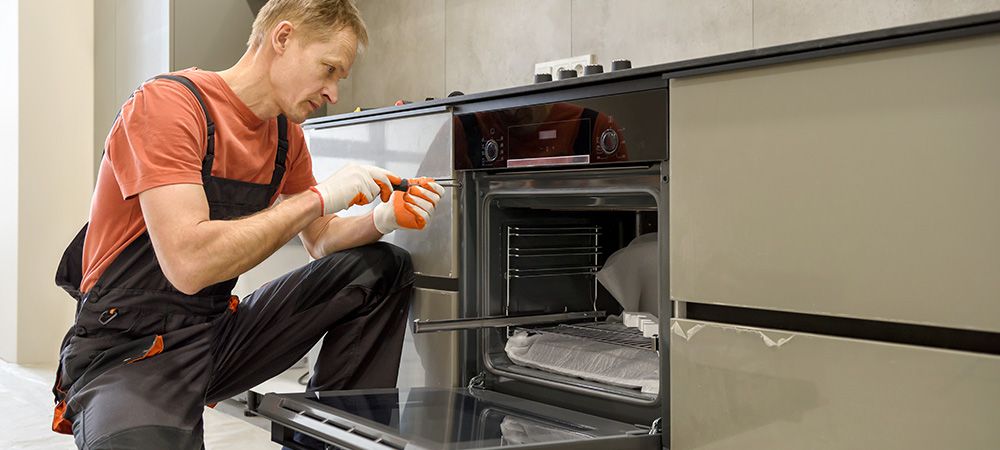
Clean the Dryer Exhaust
The dryer exhaust affects your home appliance’s ability to dry your clothes. Plus, a dirty dryer exhaust can cause a fire.
Cleaning the dryer exhaust starts with loosening the clamp and pulling at the exhaust (usually located behind the dryer). Use a straight coat hanger to remove lint clumps around the tubing before vacuuming the component thoroughly.
Repair Dishwasher Tines
Tines in the dishwasher rack can start to rust with consistent use. This rust can stain the silverware and dishes in your device. That’s why our list of home appliance maintenance tips includes using a sealant to fix rusted and chipped edges. Ensure the dishwasher dries completely before you use it.
Inspect Your Washing Machine Hose
Water damage from your washer will likely happen due to a hose leak. So, your home appliance maintenance routine isn’t complete without assessing the hoses which connect to your washing machine’s back panel.
Look for cracks, weak spots and any leaks on the hose. Be sure to fix deformities that require fixing. But sometimes, it’s just best to replace the entire hose.
Watch out For Device Overload
It’s impossible to provide a comprehensive guide to tips for home appliance maintenance without discussing the possibility of an overload.
Overloading your washer or dryer can cause damage to the belts, motors and other moving parts. The same goes for your dishwasher and microwave. Be sure to follow the manufacturer’s recommended guidelines regarding device capacity.
Related Article: How Do You Diagnose a Dryer Problem?
Final Thoughts
Making sure your appliance remains in good working condition for a long time is a game of vigilance. Above, we’ve discussed the tips for home appliance maintenance you need to know.
These tips will help you ensure your home appliance is in good working condition for a long time. And if you run into any problems, our expert technicians at Prime Appliance Repair are ready to fix your faulty appliance the same day you call them. Get in touch with us today!





